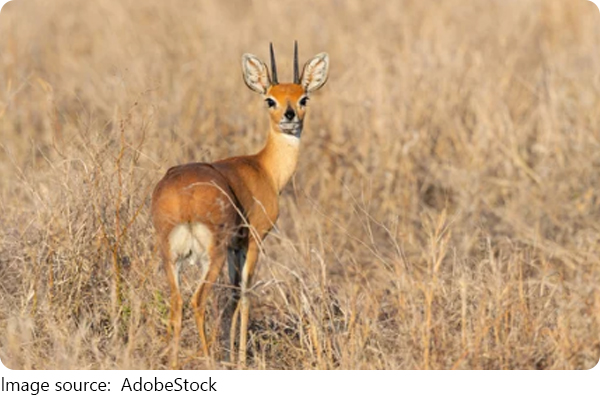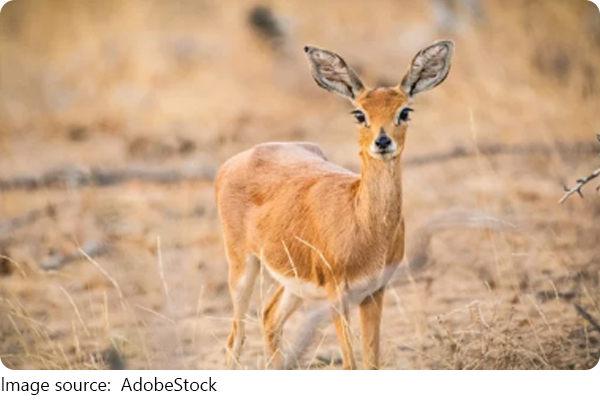Steenbok: A Small Marvel

Hello, Lykkers! The steenbok (Raphicerus campestris) is a small, elusive antelope found primarily in the savannas and scrublands of sub-Saharan Africa.
Known for its delicate size and agility, the steenbok is a fascinating species that often goes unnoticed despite being an important part of its ecosystem.
Physical Features and Adaptations
Steenboks are compact creatures, typically standing only about 40 cm (16 inches) at the shoulder and weighing between 6 to 10 kilograms (13 to 22 pounds). Their coat is a reddish-brown or greyish color, providing excellent camouflage against the dry grass and scrub they often inhabit.
They are equipped with large, rounded ears that help them detect predators from afar, making them highly alert and quick to react. Males are known to have small, straight horns, which are not used for fighting but rather for territorial defense.
Habitat and Range
The steenbok is found in a variety of habitats across Southern and Eastern Africa, including Botswana, Zimbabwe, Namibia, and parts of South Africa. They prefer areas with dense vegetation, such as open woodlands, grasslands, and savannas, where they can easily find shelter from predators.
Steenboks are solitary animals, typically found alone or in pairs, and they have an impressive ability to blend into their surroundings, often making them difficult to spot.

Diet and Feeding Habits
Steenboks are herbivores, feeding primarily on grasses, leaves, fruits, and seeds. Their diet varies seasonally depending on the availability of plants in their habitat. They are also known to forage during the early morning and late evening hours to avoid the midday heat.
Behavior and Social Structure
Steenboks are not particularly social animals. They prefer to keep to themselves, except during mating seasons or when a mother is caring for her young. Steenboks are territorial and often mark their boundaries with scent glands, and feces. This solitary lifestyle reduces competition for resources and helps them stay under the radar of larger predators.
Conservation Status
Currently, the steenbok is classified as a species of Least Concern by the International Union for Conservation of Nature (IUCN), thanks to its relatively wide distribution and stable population numbers. However, like many species in Africa, it faces potential threats from habitat loss and poaching. Conservation efforts in protected areas and wildlife reserves have helped maintain healthy populations of steenboks across their range.
By understanding its habits, adaptations, and importance in the food chain, we can better appreciate this fascinating little antelope!
Steenbok is a Gangster
The video by WildEarth

 · Animal Team
· Animal Team